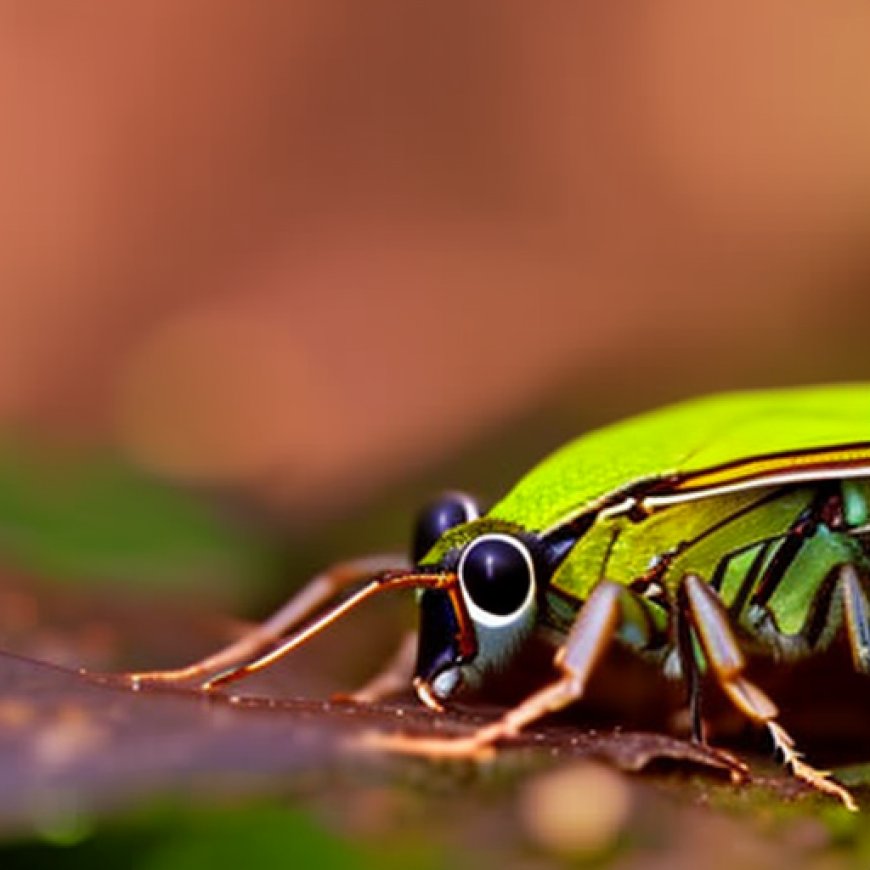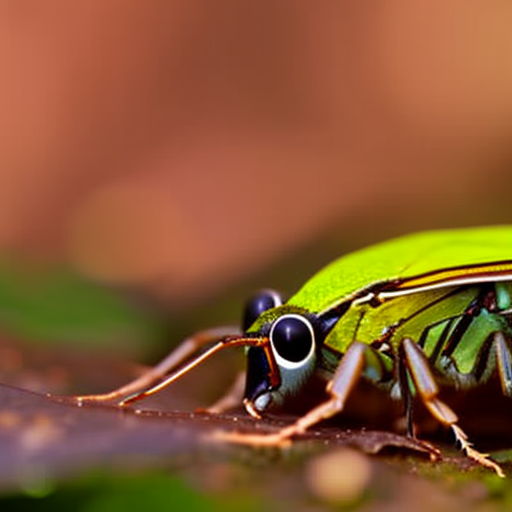Potamophylax kosovaensis, a new insect species from Kosovo that is already endangered
Potamophylax kosovaensis, a new insect species from Kosovo that is already endangered EurekAlert


Discovery of Endangered Aquatic Insect Species Highlights Urgent Need for Conservation Efforts
Introduction
Professor Halil Ibrahimi and his team from Kosovo have made significant contributions to the study of aquatic insects, which are important bioindicators of freshwater ecosystems. However, their recent discoveries have been overshadowed by concerns about the endangered status of these species. The International Union for Conservation of Nature (IUCN) classifies these newly described species as endangered, highlighting the need for immediate conservation efforts.
Newly Discovered Species
The research team has recently identified a new species called Potamophylax kosovaensis in the Llap River spring area, located within the Ibër River Basin. This region is known for its ecological significance and serves as a critical habitat for various aquatic organisms, including the newly discovered insect species.
Threats to Freshwater Insects
Unfortunately, freshwater insects in Kosovo and the Balkans region are facing unprecedented threats. Anthropogenic activities such as water pollution, littering, and the construction of hydropower plants pose immediate risks to their survival. The degradation of their habitats not only endangers these species but also disrupts the health and integrity of entire freshwater ecosystems.
Importance of Conservation Efforts
Professor Ibrahimi emphasizes the urgency of taking action to mitigate these threats and conserve the delicate balance of freshwater biodiversity. He states, “The discovery of Potamophylax kosovaensis serves as a stark reminder of the fragility of our freshwater ecosystems. We must prioritize efforts to protect these habitats and the invaluable species they harbor.”
Research Funding and Publication
The study was funded by the Integrated Water Resource Management in Kosovo (IWRM-K) and conducted at the Laboratory of Zoology-Department of Biology of the University of Prishtina. The findings were published in the open-access, peer-reviewed Biodiversity Data Journal.
Original Source
Ibrahimi H, Bilalli A, Geci D, Grapci Kotori L (2024) Potamophylax kosovaensis sp. nov. (Trichoptera, Limnephilidae), a new species of the Potamophylax winneguthi species cluster from the Ibër River Basin in Kosovo. Biodiversity Data Journal 12: e121454. https://doi.org/10.3897/BDJ.12.e121454
Disclaimer
AAAS and EurekAlert! are not responsible for the accuracy of news releases posted to EurekAlert! by contributing institutions or for the use of any information through the EurekAlert system.
SDGs, Targets, and Indicators Analysis
1. Which SDGs are addressed or connected to the issues highlighted in the article?
- SDG 6: Clean Water and Sanitation
- SDG 14: Life Below Water
- SDG 15: Life on Land
The article discusses the threats faced by freshwater insects in Kosovo and the broader Balkans region due to anthropogenic pressures such as water pollution, littering, and the construction of hydropower plants. These issues are directly connected to SDG 6, which focuses on ensuring clean water and sanitation for all. Additionally, the degradation of freshwater ecosystems and the endangerment of aquatic organisms align with SDG 14, which aims to conserve and sustainably use the oceans, seas, and marine resources. The protection of freshwater habitats and biodiversity also relates to SDG 15, which focuses on the conservation and sustainable use of terrestrial ecosystems.
2. What specific targets under those SDGs can be identified based on the article’s content?
- SDG 6.3: Improve water quality by reducing pollution, eliminating dumping, and minimizing release of hazardous chemicals and materials.
- SDG 14.1: Prevent and significantly reduce marine pollution of all kinds, particularly from land-based activities.
- SDG 15.1: By 2020, ensure the conservation, restoration, and sustainable use of terrestrial and inland freshwater ecosystems and their services.
Based on the article’s content, the specific targets that can be identified are related to improving water quality, preventing pollution, and conserving freshwater ecosystems. These targets align with SDG 6.3, which focuses on improving water quality by reducing pollution and minimizing the release of hazardous chemicals. SDG 14.1 aims to prevent and reduce marine pollution, including pollution from land-based activities. SDG 15.1 emphasizes the conservation, restoration, and sustainable use of terrestrial and inland freshwater ecosystems.
3. Are there any indicators mentioned or implied in the article that can be used to measure progress towards the identified targets?
- Water pollution levels
- Presence of litter in freshwater ecosystems
- Number of hydropower plants constructed
- Conservation efforts and initiatives
The article mentions water pollution and the construction of hydropower plants as anthropogenic pressures threatening freshwater ecosystems. Monitoring and measuring water pollution levels can serve as an indicator to measure progress towards SDG 6.3. The presence of litter in freshwater ecosystems can also be used as an indicator of pollution and progress towards SDG 14.1. The number of hydropower plants constructed can be an indicator of the impact on freshwater ecosystems and progress towards SDG 15.1. Additionally, the article highlights the importance of conservation efforts, which can be measured through initiatives and actions taken to protect freshwater habitats and biodiversity.
4. Table: SDGs, Targets, and Indicators
| SDGs | Targets | Indicators |
|---|---|---|
| SDG 6: Clean Water and Sanitation | 6.3: Improve water quality by reducing pollution, eliminating dumping, and minimizing release of hazardous chemicals and materials. | Water pollution levels |
| SDG 14: Life Below Water | 14.1: Prevent and significantly reduce marine pollution of all kinds, particularly from land-based activities. | Presence of litter in freshwater ecosystems |
| 15.1: By 2020, ensure the conservation, restoration, and sustainable use of terrestrial and inland freshwater ecosystems and their services. | Number of hydropower plants constructed |
The table presents the identified SDGs, their corresponding targets, and the specific indicators mentioned in the article. SDG 6.3 focuses on improving water quality, with the indicator being water pollution levels. SDG 14.1 aims to prevent marine pollution, with the indicator being the presence of litter in freshwater ecosystems. SDG 15.1 emphasizes the conservation of freshwater ecosystems, with the indicator being the number of hydropower plants constructed.
Behold! This splendid article springs forth from the wellspring of knowledge, shaped by a wondrous proprietary AI technology that delved into a vast ocean of data, illuminating the path towards the Sustainable Development Goals. Remember that all rights are reserved by SDG Investors LLC, empowering us to champion progress together.
Source: eurekalert.org

Join us, as fellow seekers of change, on a transformative journey at https://sdgtalks.ai/welcome, where you can become a member and actively contribute to shaping a brighter future.







